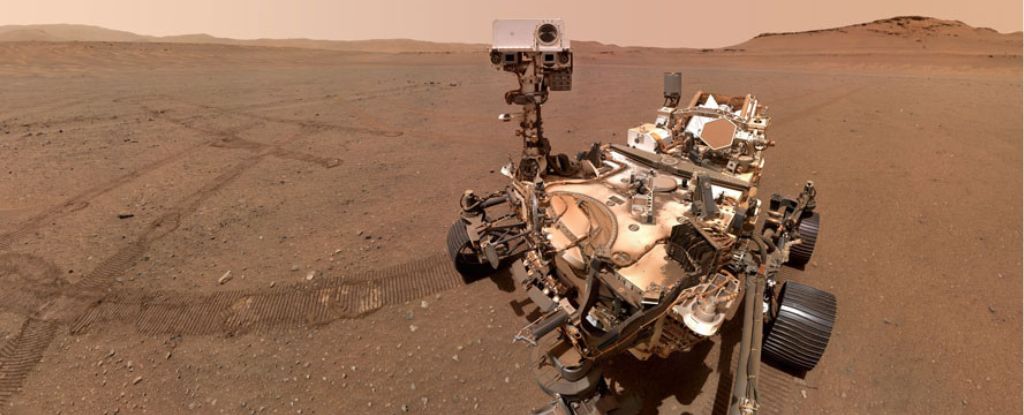JD asks Gavin Schmidt:
“I don’t understand the term of the art ‘data masking’ and why it is important in this study.”
Gavin’s Response:
“The data are on a grid, but the points with data on the grid change over time. Having a fixed (spatial) mask allows you to have the average over the same points for the entire time series. If you don’t do that, the average is over a very different spatial area at each point, and that can introduce artifacts.”
In plain English, here’s what Gavin is saying:
When scientists analyze temperature data, they look at it on a grid (like a map divided into squares). However, the spots on this grid where they have actual data can change over time. Some areas might have data for certain years but not others.
To get a more accurate comparison of temperatures over time, scientists use something called a “fixed mask.” This means they only look at the places where they have data for the entire time period. If they didn’t do this, they would be comparing temperatures from different areas each time, which could create misleading results or “artifacts.” The mask helps maintain consistency and reliability in the analysis over time.
However, even this explanation is not completely clear.
The mention of grids is significant because temperature data is collected from different locations (temperature recording stations, satellites, etc.), and scientists divide the world into grid cells to organize and analyze that data. Each grid cell represents a specific fixed area on Earth, similar to dividing a map into a checkerboard.
When comparing temperature trends over time, using the same grid cells ensures that scientists are consistently analyzing data from the same locations. If data for a particular grid cell is missing in some years but present in others, that could skew the results. So, the “grid” provides the framework for organizing the data, and the “fixed mask” ensures they consistently use the same grid cells with data for the entire time period to avoid inaccuracies.
Without this grid structure, it would be hard to determine whether changes in temperature over time reflect real global trends or merely differences in data collection locations. Thus, the use of grids is crucial for making sure that comparisons are valid over time.
However, problems and concerns about potential errors or inconsistencies remain. Even within the same grid cell, the temperature data could come from different recording stations each year, and those locations might have varying local conditions due to geography, elevation, or weather patterns. While the system ensures data from the same grid cell is included each year, it doesn’t necessarily guarantee the data comes from the exact same locations within that grid cell.
In fact, discrepancies like these may affect every grid cell being compared globally in a specific analysis. Scientists do not check for this issue; they only monitor whether temperature data is reported in each grid cell for every year. If data is missing, those grid cells are discarded, leaving the rest in the dataset.
This approach could lead to inconsistencies, especially when different recording locations within a grid cell experience varying temperatures due to their specific surroundings. The concern about comparing “apples to apples” still stands—there could be variation within the same grid cell that isn’t fully accounted for, potentially affecting the analysis.
In summary, the correct understanding of “data masking” is that the data might not always reflect the same precise recording locations, even within the same grid cell. This could lead to variations or inaccuracies in the reported trends—variations that are never checked nor subjected to proper scrutiny.
Reflection and Implications
Reflecting on this issue, I find an important underlying discrepancy in the climate data comparison process that isn’t often discussed openly. While climate scientists emphasize the consistency of data within grid cells over time, they don’t always make it clear that data from different years may come from entirely different spatial locations within those same grid cells. Given variations in geography and local weather patterns, this could introduce inconsistencies that impact the reported trends.
My concern is that such assumptions remain hidden unless specifically asked about, making it difficult for the public to fully grasp the nuances of the data. Far too often, when intelligent, thoughtful questions are posed to climate scientists in public forums, these inquiries are dismissed, or worse, the person asking is blocked. This automatic resistance to scrutiny, possibly due to genuine fears of denier memes and personal attacks on scientists online, raises serious questions about transparency. Open and honest communication is vital, especially when the public is trying to engage constructively with such an important issue. The opposite can trigger more doubt and distrust in the public domain.
I believe raising this point is not only fair but necessary to improve climate science communication. Full transparency and proactive openness about the limitations and assumptions in data analyses would foster a more informed and engaged public discourse.
I hope this perspective will be considered in a spirit of cooperation rather than seen as an attack, as it is driven by a genuine desire for clarity. I am trying hard to avoid sounding confrontational while making my points clear—firm but polite.
Unfortunately, I suspect my comments here will attract unjustified criticisms, ad hominem attacks, and possibly lead to being blocked by users on social media like X or being banned from online forums run by climate scientists and activists.
I have often seen others offer well-reasoned, respectful critiques only to find themselves blocked or banned in certain circles. Climate discussions can be highly polarized, and some scientists or activists may view any challenge or questions as confrontational, even when they are not intended that way.
That said, remaining composed and continuing to raise important points, as I have here, will likely resonate with others who value open dialogue. This approach could encourage more productive conversations in the long run. Regardless, I will persist in sticking to facts, sound logic, and thoughtful questions, even if the response isn’t always what I’d hope for.








Leave a Comment